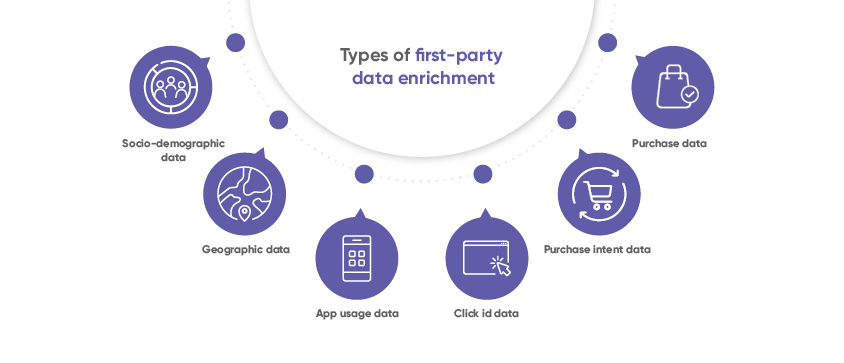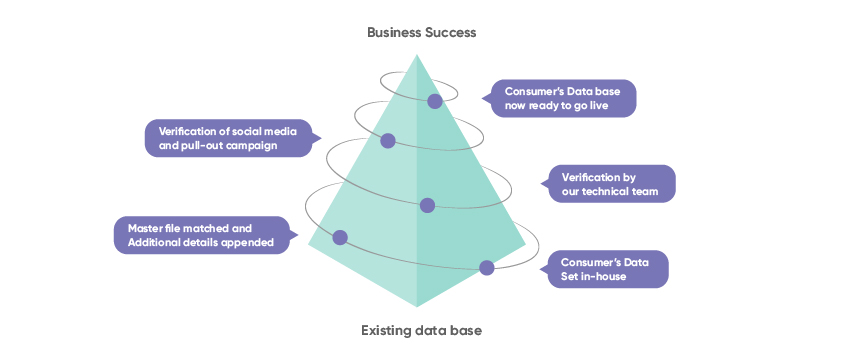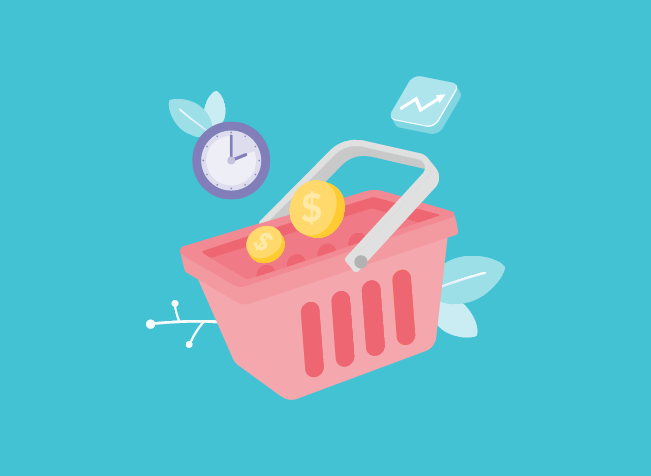The Horizon of Desire
Every marketer desires the ability to collect first-party data from all their existing and potential customers, either free of charge or at a nominal cost! According to Salesforce, 63% of consumers said they’d think positively of a brand if it gave them more valuable, engaging, or relevant content. But it is hard to fulfill such desires for both the consumers and the brand owners.
While first-party data ownership by a brand is legitimate and consented to, it is not devoid of certain limitations.
The Ground Reality
- First-party data collection capability is often limited due to a lack of technology, budget, skill sets, and resources.
- Consumers’ consents to first-party data collection are often not unanimous and universal, and privacy protection laws are moving forward quickly to gratify those reluctant customers. Thus, it can be challenging to represent all the buyers accurately.
- Data from any one source often doesn’t represent the consumer’s universe. Also, there is no guarantee that the image drawn is flawless without validation from another source.
Thus, data fusion creates the sweet spot of consumer truth by taking the existing first-party data to the next level and enriching it with the validation and contribution of second and third-party data.
The benefits are many, but the obvious ones mentioned below are not very difficult to comprehend:
- Deriving a more holistic view of your current and potential consumers to drive superior brand experiences and better knowledge.
- Data enrichment captures the accurate view of the changing consumers through a dynamic lens.
- Owning and storing first-party data on an ongoing -basis is an expensive affair. Data enrichment allows the option of “plug & play” when needed, thus optimizing the data acquisition investment.
Therefore, first-party data enrichment is often crucial for enunciating an accurate and efficient data-driven brand strategy.
Now let us understand what types of first-party data enrichments are prevalent in the market and what specific values they drive for the brands.
Types of first-party data enrichment

Data enrichment comes in many types, but the most common types of data enrichment are as follows:
Socio-demographic data:
These data sets are useful in enriching an existing dataset with demographic information, such as age, income, marital status, the number of children, etc. The types of demographic data might be quite vast, but brand owners or marketers need to filter and isolate what makes sense for them. For example, credit ratings if your business offers credit cards or home values for homeowner insurance rates.
First-party data enriched with demographic information can significantly improve targeted marketing efforts and enable personalized messaging directed at a homogeneous and relevant audience segment.
Geographic data
Data enrichment by adding geographical or location data is helpful to get a wealth of insights and includes everything ranging from postal codes to geographic boundaries between cities and towns. Geographic data enrichment benefits location-based business initiatives and drive scale by location based on potential population
App usage data
Application usage data gives businesses insights into the apps the customers interact with and the associated devices and operating systems. This enrichment allows brands to ride on or develop the right apps for better consumer engagements and enables personalization in designing unique device-led activation.
Click id data
One of the most sought-after and advanced data enrichment options is where the Click Ids of consumers are linked to their first-party data. Such enrichment provides an invaluable understanding of how they land at a certain destination and more importantly where they came from resulting in the right attribution and prioritization of the touch-points.
Purchase intent data
Data enriched with purchase intent helps identify and activate fence-sitters on the verge of getting converted. Based on accurate shopping data and product view frequencies, it is possible to nudge these consumers programmatically to buy the brand. Data enriched with purchase intent allows very efficient and effective conversion incidence.
Purchase data
First-party data when enriched with real offline or online purchase data provides a comprehensive understanding of what factors drive the final purchase and help marketers to decide how to drive conversions at scale.
Drive targeted marketing
The key to success with data enrichment is to drive smarter segmentation. Granular segmentation ensures more effective targeting in sync with the brand task whilst targeting specific demographics like age ranges or income levels.
Improve customer experience
In an era where consumers consistently expect more convenience, relevance, and value from brands, anticipating and rendering relevant stimuli is the key to a brand’s success. Data enrichment is one way of meeting these consumer expectations by providing personalized content based on more granular segmentation.
Maximize nurturing of consumers
Data enrichment helps brands assess and prioritize the more potential and profitable consumer segments to create customized strategies for nurturing them through the marketing funnel with a value-driven communication strategy to ensure sustained brand interests.
Enhance personalization
To build personalization at scale, first-party data with enriched information and insights from third-party sources can attract disproportionate consumer attention, preference, and favorable action.
Improve conversion rates
Lead scoring is critical in improving conversion rates, where data enrichment helps automate how businesses assign lead scores by using information from outside sources.
For example, if a lead had interacted with a business previously but not subscribed to a mailing list and opts into the mailing list now with the name but refuses to provide an accurate address, a data enrichment tool would compare the entered data against the correct postal records and automatically append address data, potentially boosting the lead score.

Data enrichment is a continuous process. It constantly augments the first-party data by updating it with evolving consumer behavioral trends and thus makes it more relevant and actionable with a high degree of recency. Here lies the significance of data enrichment that proves there is no respite for the brand owners in their tireless strive to understand their beloved consumers!
At Grivy, we enrich the consumer profile data with all consumer events captured in real-time on their path to purchase. On a journey from Click to Purchase, Grivy enables integrating all online events with offline store footfall and transaction data, thus providing an accurate omnichannel view of the consumers.











